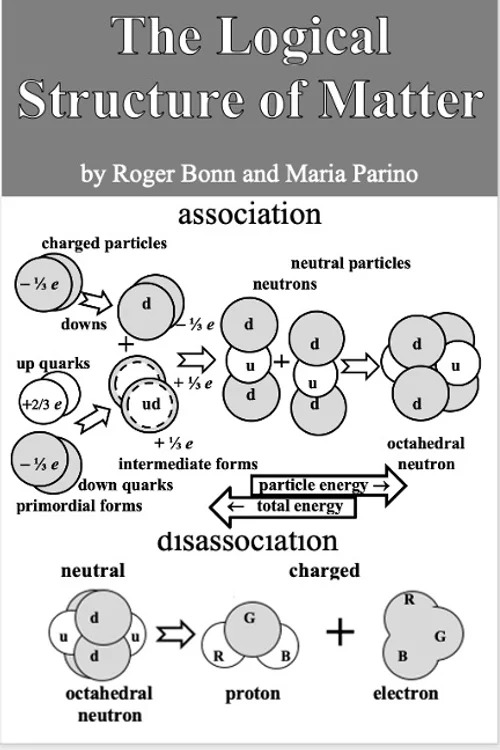
Price and availability TBD
The Logical Structure of Matter
The atomic theory challenged the antiquated notion that if one were to divide an amount of homogeneous substance into two or more portions, each portion would be comprised of exactly the same substance. It denies presumptions of this commonsense notion being true ad infinitum. It avers that such a division process would ultimately be halted at a step in which single molecules would be obtained. Further division would obtain individual atoms of one or more of the 92 naturally occurring elements. Continuing this process even further would reveal that these atoms are comprised of nuclei and electrons. Further division of nuclei has revealed the existence of protons and neutrons. And these, it turns out, are comprised of ‘up quarks’ and ‘down quarks’; these are not directly observed but are strongly inferred. The electron, on the other hand has been thought to be indivisible like quarks.
What is called the ‘standard model’ is conflated to encompass the theories of fundamental particles in addition to their cosmological origins and effects. The standard model of particle physics concerns itself with three of the forces of nature: the electromagnetic force, what is called the ‘weak force’, and what is referred to as the ‘strong force’ involved in sub-nuclear interactions. As an integral aspect of the theory concerning these forces, classification of sub-nuclear particles includes participants and enforcers. The portion of this classification that includes ‘participants’ is what we will be dealing with in understanding what we refer to as ‘ordinary’ matter.
In this volume we introduce a new twist based on the results of the merger of electrostatic and gravitational forces discussed in the companion volume. Participant vs enforcer becomes a meaningless distinction; gluons which embodied the ‘strong’ force in the standard model are no longer necessary. The electrostatic and massive charges that define participants perform their own enforcement. There is no transmutation of participants such as the conversions between up and down quarks previously envisioned as taking place in beta decay. The ratio of down to up quarks is always two-to-one unlike its variability in the standard model. There is an implied order of viable transitions between stable states of composites of these material particles based on the conservation of energy and the minimization of particulate energy in thermodynamic environments. This transitioning proceeds from a high temperature quark soup to the elements in the periodic table as temperatures are reduced, not as a quasi-historical scenario of the universe, but dependent upon situation-dependent processes that occur in a stationary state universe.